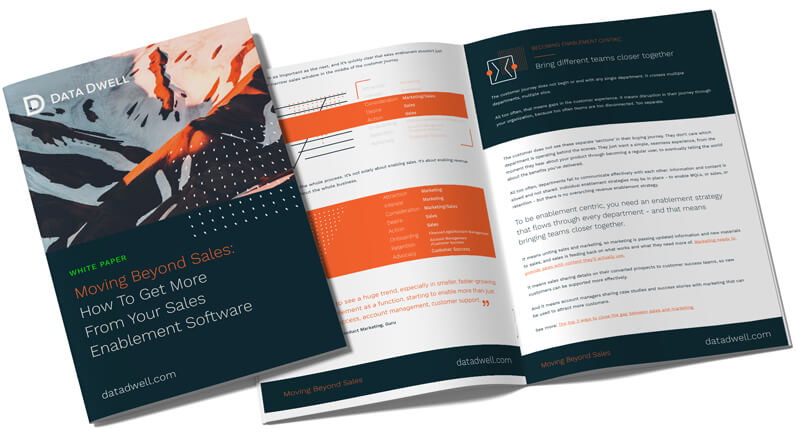
Feedback is highly valuable for your employees, and they want it. All the stats and research supports the fact that employees desire good feedback from their managers and their colleagues.
It’s vital for the development of individuals, for the unity of teams, and for the success of your business.
So how can you provide better feedback to your teams?
1. Use a proven model of good feedback
When it comes to feeding back to anyone in your organisation, it helps to think about the right way to do that. There have been many scientific studies analysing the best way to praise, critique and change the behaviour of employees in the workplace.
Some of most well-known and most effective models of feedback all focus on three specific areas of discussion. They are:
The McKinsey Method
-
- A = Specific Detail
- B = Impact
- C = Change
When someone does a specific event or action, it can have this impact on people’s feelings or business operations. In the future, that person should try and change their behaviour by doing this instead. This method helps remove any personal accusations.
An easy way to think of this is with the acronym AID – Action, Impact, Desire.
The Stanford Method
-
- I like
- I wish
- What if?
With this method, you complement and praise first, telling your employee what you like about their behaviour or performance. Then by saying I wish, you’re not directly criticising the person but pointing something important out. You finish by saying “What if you tried doing this?”, which provides an action for them to follow up on.
The SKS Method
-
- Stop
- Keep
- Start
With this method, you aim to give equal parts praise, criticism and suggestions. You tell your employee what you’d like them to stop doing, what they should keep doing because it’s going well, and what they should start trying next.
2. Avoid being too personal
Using the above models – particularly the McKinsey/AID method – helps you to keep your feedback focused on behaviour and impact – rather than on the individual themselves. The last thing you want to do is make this personal, as your employees will not look favourable on that.
For example, aim to provide feedback like:
“When you come unprepared to a meeting, it makes you sound stupid.” As opposed to “You are stupid”. There’s a big difference.
Or, “That action caused this problem” not “you caused this problem”.
3. Use evidence not anecdotes
In any feedback session, you should always make sure you have data and evidence to hand. This is especially useful when dealing with sales reps, but should be done with any employee.
You want to avoid any personal accusations and prevent a slinging match of “he said, she said”. Anecdotes can be too personal. Instead, focus on concrete evidence of areas of performance that aren’t going to plan.
4. Find spontaneous ways to praise and correct
Once you know how to give feedback, you need to make sure that you do take the time to make it happen. 1-to-1’s and other organised meetings are very important for this, giving you a structure to follow.
But you should also plan on giving feedback in impromptu ways. Don’t wait for that monthly review when you can pass on your thoughts, praise, suggestions and constructive criticism on a day-to-day basis, whenever you see the opportunity. This helps makes feedback less of a “big thing” and just something that everyone gets.
5. Promote a culture of openness
But in order to pass regular, impromptu feedback – without offending your teams – you need to make sure you have a strong culture of openness within your business.
You want people to be open about their challenges, their concerns and their successes. If someone has a problem, you want them to talk about it and not bottle it up.
Most importantly, you don’t want people whispering behind each other’s back. You should aim for a culture where anyone can talk to anyone about an issue, to prevent any possible backstabbing.
6. Facilitate ways to feedback to managers (and to yourself)
That also means making sure there are ways for employees to critique their managers and even yourself. This shouldn’t be about ‘boss killing’, but everyone should have the opportunity to pass on useful feedback so that everyone in your business can improve.
Try monthly team meetings without that team’s manager and ask employees how they think their manager could do a better job. You can then feedback those suggestions anonymously to your manager.
And make sure all your employees know they can trust you, and that you’re open to feedback yourself. You could try having open office hours, or a suggestion box/email inbox that allows for anonymous feedback.
7. Be honest and direct
With any feedback given, you should always aim to be honest and direct. An open, trustworthy culture in your business should let you do it.
It’s the most important part of giving feedback, according to Kim Scott. She calls it radical candour.
By being honest and direct, you’re getting to the point of the issue straightaway. You’re not beating around the bush, you’re confronting it directly. But you’re doing it out of personal concern for your employees. That’s important.
If you don’t care about them personally, you’ll come across as aggressive and insincere. And if you don’t confront them directly, you won’t get the message across. You might seem too empathetic, a push over perhaps.
8. Remind everyone of your feedback culture
Finally, once you have a good feedback culture and structure in place, make sure everyone in your business knows about it. Don’t let it be forgotten.
Share those models of feedback using internal content that’s always visible. Send regular emails with links to feedback tips. Put up posters in meeting rooms.
Whatever helps get your team focused on the benefits of giving good feedback to each other.




